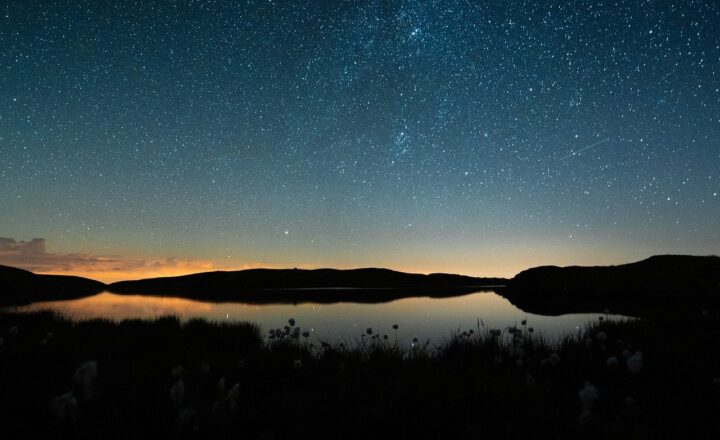Exploring Space-Themed Cinema and Its Influence on Public Perception of Space
November 15, 2024

Space has long captivated the human imagination, serving as a backdrop for tales of adventure, discovery, and existential contemplation. Over the past century, space-themed cinema has emerged as a powerful medium for storytelling, shaping and reflecting societal perceptions about our universe. This article delves into the evolution of space-themed films, explores their impact on public perceptions of space exploration and science, and examines how these cinematic experiences have influenced real-life interests and initiatives in astronomy and space travel.
1. The Genesis of Space Cinema
The genesis of space cinema can be traced back to the early 20th century, with silent films such as “A Trip to the Moon” (1902) by Georges Méliès setting the groundwork for fantastical depictions of space travel. As technology progressed, so did filmmakers’ visions, escalating to sound films that addressed both scientific inquiry and speculative fiction.
The mid-20th century saw a dramatic shift in the landscape of science fiction cinema. The Space Race between the United States and the Soviet Union ignited public interest in space exploration, prompting filmmakers to explore themes of interstellar travel and alien encounters. Classic films like “2001: A Space Odyssey” (1968), directed by Stanley Kubrick, became culturally iconic by blending philosophical questions with pioneering visual effects, encouraging audiences to think critically about humanity’s place in the cosmos.
2. The Representation of Space in Film
The visual representation of space in cinema has evolved significantly, particularly with advancements in special effects and CGI. In the 1970s and 1980s, films like “Star Wars” (1977) delighted audiences with imaginative depictions of space battles and fantastical worlds. These films popularized the idea that space is not only a frontier for scientific discovery but also a realm of limitless adventure.
In contrast, films like “The Martian” (2015) attempted to adopt a more realistic approach, grounded in scientific accuracy and a portrayal of space as a frontier for human endeavor and survival. This blend of realism and imagination has shaped public perceptions, encouraging the idea that space is both an attainable destination and a canvas for exploration.
3. The Impact of Space Cinema on Public Interest in Space Exploration
Space-themed cinema has played a crucial role in boosting public interest and engagement with space exploration. The emotional and narrative power of films like “Interstellar” (2014) and “Gravity” (2013) has inspired audiences to engage with scientific concepts, encouraging discourse about black holes, time dilation, and the human spirit’s resilience in the face of cosmic challenges.
Moreover, major space exploration initiatives, such as NASA’s Mars missions, have frequently leveraged successful films for educational outreach. Movies serve as catalysts for public interest, prompting increased funding for scientific research and fostering future generations’ aspirations to work in STEM (Science, Technology, Engineering, and Mathematics) fields.
4. The Role of Documentary Films in Shaping perceptions of Space
Documentary films focused on space exploration have also played a significant role. Films like “Apollo 11” (2019), which utilized archival footage from NASA, provide a raw and authentic glimpse into the triumphs of space exploration, grounding the audience’s understanding of space in a historical context. This authenticity contributes to a more nuanced understanding of humanity’s journey into space, strengthening public support for ongoing endeavors such as space station missions and future Mars explorations.
5. The Future of Space Cinema
As humanity prepares for an era of private spaceflight and interplanetary colonization, the future of space cinema looks increasingly promising. With advancements in virtual reality and interactive film technologies, audiences may soon experience space stories in immersive formats, deeply engaging them in the intricacies of space travel and exploration.
Moreover, as questions about ethical responsibilities in space, sustainability, and the potential for extraterrestrial life become more relevant, films addressing these issues will undoubtedly influence public discourse, prompting new generations to explore the moral implications of our cosmic endeavors.
Conclusion
In summary, space-themed cinema serves as a powerful cultural force that has shaped and influenced public perceptions of space exploration. From its early representations of fantastical adventures to its current engagements with realistic portrayals of space travel, film continues to serve as a bridge between scientific inquiry and public imagination. As our ambitions in space continue to evolve, cinema will undoubtedly follow suit, continuing to inspire and educate audiences about our universe.
Understanding the relationship between film and public perception is crucial, as both can fuel curiosity and inspire action towards real-world exploration. As we embark on this new era of space exploration, it becomes ever more clear that film and reality will continue to intertwine, pushing the boundaries of what we know and believe possible in the cosmos.








